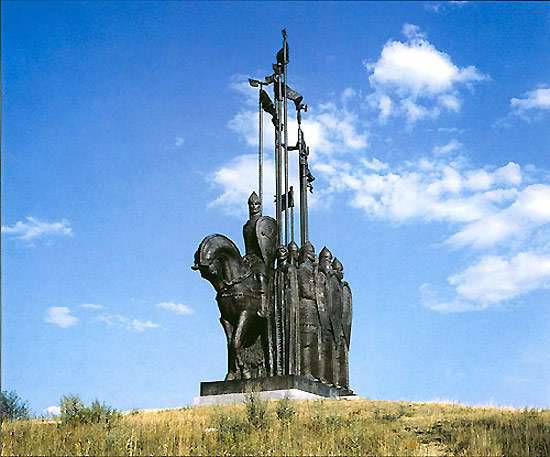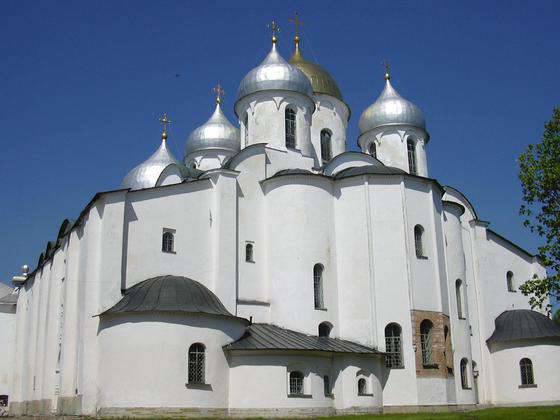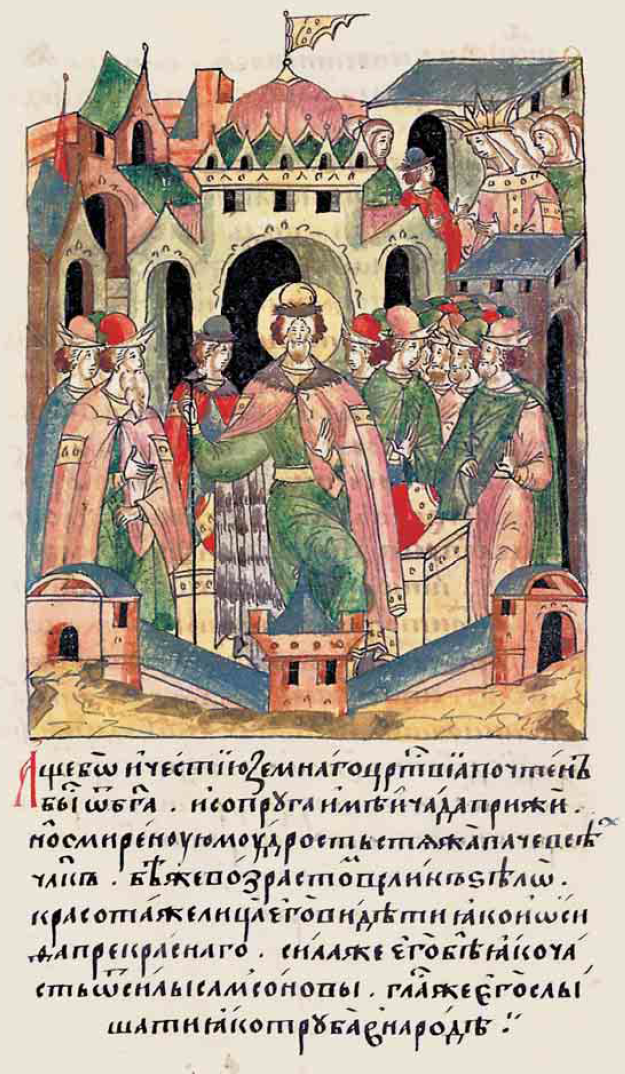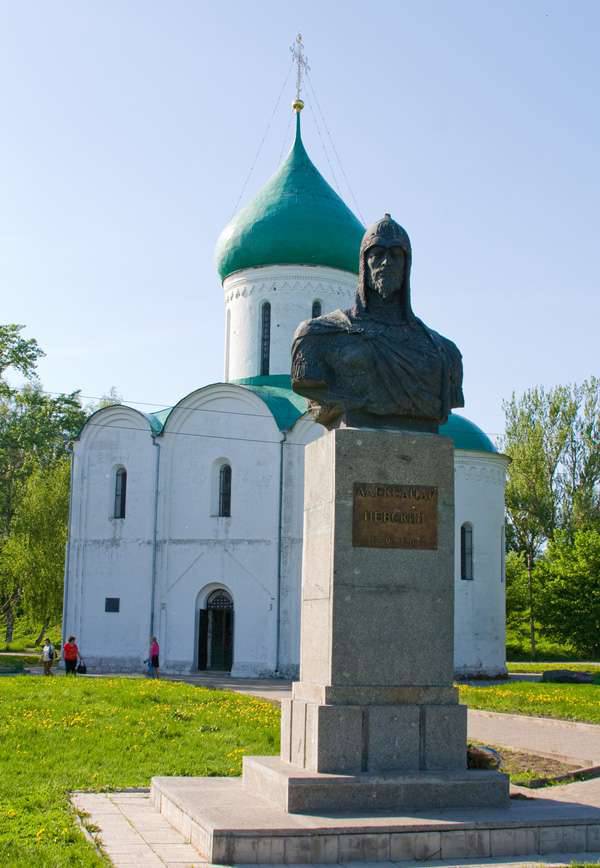“Whoever comes to us with a sword, will die by the sword.” That was where the Russian land stood and stands! ”

780 years ago, in 1236, Alexander Yaroslavich began his independent activities as a prince of Novgorod. With military victories on the western borders of the country and skillful policies in the east, he predetermined the fate of Novgorod and Vladimir Russia for two centuries. He showed the need for cruel, uncompromising confrontation with the West and allied relations with the East, the Horde kingdom.
Youth
Homeland of the famous Russian commander was the ancient Russian city of Pereyaslavl (Pereslavl-Zalessky), standing on the river Trubezh, which flows into Lake Kleschino (Plescheevo). They called it Zalessky because in ancient times a wide strip of dense forests enclosed, as it were, protected the city from the steppe. Pereyaslavl was the capital of Prince Yaroslav Vsevolodovich, a man of authority, decisive and firm in the fight against enemies, who spent most of his life in military campaigns.
Here is 13 in May 1221 of Yaroslav and his wife, Princess Rostislav (Feodosia) Mstislavna, Toropets princess, daughter of the famous warrior, Prince of Novgorod and Galician Mstislav Udatny, the son, the second in a row, named Alexander. The child grew up healthy and strong. When he was four years old, Alexander was ordained as a warrior (initiation). Knyazhych girdled with a sword and put on a war horse. They were given a bow and arrow in their hands, which indicated the duty of the warrior to protect his native land from the enemy. From this time he could lead the squad. The father cooked the knight from his son, but ordered to teach and to read. He studied the prince and the Russian law - "Russian Truth". The favorite occupation of the young prince was the study of the military experience of his ancestors and the events of his native antiquity. In this regard, the Russian chronicles served as an invaluable treasure trove of knowledge and military thought.
But the main thing is still in the training of Alexander was the practical development of all the intricacies of military affairs. This was the unwritten law of that harsh time, and the princes did not make any concessions. In Russia, then they grew up early and became warriors as early as adolescence. Already in the 4-5 years, the prince received an exact copy of the sword from a soft, light-wood linden tree (he allowed him to teach how to keep his distance in battle). Then the wooden sword became harder and harder - it was made of oak or ash. Children were also given bows and arrows. The onion size gradually increased, the bowstring resistance increased. At first they threw an arrow at a fixed target, and then at a mobile one, the princes were taken for hunting. Hunting was a whole school for tracking, tracker skills appeared, youths learned to kill and face danger (psychological preparation). Experienced princely warriors taught Yaroslav Vsevolodovich children to horse riding. Initially on well-traveled war horses. By the age of ten, the prince had to personally pacify the unbroken three-year-old horse. Warriors taught the prince possession of a sulitsa (Russian dart) and a spear. Aptly thrown by the hard hand of a sulic hit the enemy in the distance. Much more skill demanded a fight on a spear. Here, in the first place, a ram hit with a heavy spear was practiced. The pinnacle of art was considered an irresistible injection in the visor.
Such training was no exception: it was obligatory in princely families. The future prince is both a ruler and a professional warrior. Therefore, it is not at all surprising that the facts that almost all the ancient Russian princes were selected knights, personally participated in the battles, and even in the front ranks of their troops, often engaged in fights with the leaders of their enemies. A similar training, albeit simpler, without riding, training a swordsman (the sword was expensive), etc., was received by all free men of Russia. Bow, hunting spear, ax and knife were everyday weapons Russian people of that era. And the Ruses at all times were considered the best warriors.
Features of Novgorod
In 1228, Alexander and his elder brother Fedor were left by their father, together with the Pereyaslav army, who were going to march on Riga in the summer in Novgorod under the supervision of Fedor Danilovich and Tiun Yakim. Under their supervision, the princes continued training in the martial work. The princes learned Novgorod, its order, in order not to make rash decisions in the future, which could cause a quarrel with free citizens. Those invited to reign were often simply expelled from Novgorod. They pointed to the road leading from the city, with the words: "Go, prince, you are not loved by us."
Novgorod was the most populous and richest city in Russia at the beginning of the XIII century. That is why he was called Great. He was not touched by the steppe raids in the south and the fierce struggle of the princes for Kiev, which was often devastated, only strengthened the position of the northern center of Russia. Full-flowing Volkhov divided the city into two parts. The western side was called Sophia, here was a strong Kremlin - “Detinets”, and in it is the magnificent stone cathedral of St. Sophia. The long bridge connected the Sofia side with the eastern part of the city - the Trade side, the busiest place in Novgorod. There was a bargaining. Merchants from the Novgorod Pyatin (regions), from the banks of the Volga, the Oka and the Dnieper, representatives of the Finno-Ugric tribes from the Baltic coast, residents of Scandinavia and Central Europe came here. Russians sold furs and skins, kegs of honey, wax and lard, hemp and flax bales; Foreigners brought weapons, iron and copper products, cloth, fabrics, luxury goods, wine and many other goods.
Novgorod the Great had its own special management system. If in the other Russian lands, the veche has already given way to the leading role of princely power, in Novgorod things were different. The highest authority in Novgorod was veche - a collection of all free citizens who had reached the age of majority. Veche invited a prince with a small retinue who liked Novgorod to reign, so that the prince did not have the temptation to seize control, and elected from the ranks of the boyars the mayor. The prince was the commander of the feudal republic, and the posadnik protected the interests of the townspeople, supervised the activities of all officials, together with the prince he was in charge of administration and court, commanded the militia, supervised the assembly of veterans and the boyar council, represented in external relations. In addition, an electoral tysyatsky played an important role in the city, representing the interests of smaller boyars and black people, in charge of a commercial court, disputes between Russians and foreigners, and participated in the foreign policy of the aristocratic republic. An important role was also played by the archbishop (lord) —the keeper of the state treasury, the controller of measures and weights, and the overlord regiment kept order.
The prince invited to the Novgorodian reign (as a rule, from the lands of Vladimir who were the breadbasket of a free city) did not have the right to live in Novgorod itself. His residence along with the squad was Gorodishche on the right bank of the Volkhov.
Novgorod at that time was a powerful, mobile military organization. Questions of protection of Novgorod from external enemies have always been decided at veche meetings. In the face of the threat of an enemy attack or campaign of the Novgorodians themselves, a meeting was held, at which the number of troops and movement routes were determined. According to the old custom, Novgorod exhibited a militia: each family sent all its adult sons, with the exception of the youngest. The refusal to go to the defense of his native land was considered an indelible shame. Discipline troops maintained verbal promise, an oath, which was based on the decision of the veche. The basis of the army was the urban and rural militia, formed from artisans, small traders and peasants. The troops also included squads of boyars and large merchants. The number of warriors brought by the boyar was determined by the vastness of his land holdings. The squads of the boyars and Novgorod merchants were the equestrian "front squad". The army was divided into regiments, the number of which was not constant. Novgorod could put up 20 thousands of warriors, which for feudal Europe was a big army. At the head of the troops were the prince and posadnik. The militia of the city itself had a coherent structure that corresponded to the administrative division of Novgorod. It was recruited from five urban ends (Nerevsky, Lyudin, Plotnitsky, Slavensky and Zagorodsky) and numbered about 5 thousand fighters. City militia led tysyatsky. The militia consisted of hundreds led by centurions. The hundred included militia of several streets.
In addition, Novgorod land has been famous since ancient times. fleet. Novgorodians were reputed to be experienced and fearless sailors who knew how to fight well on the water. Their ships had a deck and sailing equipment. River vessels were quite spacious (from 10 to 30 people) and fast. Novgorodians skillfully used them to transfer troops and block rivers when it was required to close the way for enemy ships. The fleet of Novgorodians repeatedly participated in military campaigns and won convincing victories over the Swedish ships. And the river flotillas of Novgorodians (ushkuyniki) actively operated on the Volga and Kama, as well as the North. It was in Novgorod that Prince Alexander knew the combat capabilities of ship rati, the speed of movement of foot troops on water. That is, the experience of Svyatoslav the Great was restored, which, with the help of ship marsels, could rapidly transfer troops over vast distances and successfully confront Khazaria, Bulgaria and Byzantium.
It must be said that the linking of the creation of the Russian fleet with the name of Peter I is incorrect in the root. The Russian fleet has existed since ancient times, as evidenced by the victories of Rurik, Oleg the Prophetic, Igor and Svyatoslav and other Russian princes. So, in the Novgorod land the fleet existed for several centuries, inheriting the traditions of the Russian Varyags.
The combat command of the Novgorod troops was not much different from other Russian troops. His “forehead” (center) usually consisted of militia infantry. On the wings (flanks), in the shelves of the right and left hands, became the princely and boyar cavalry (professional warriors). To increase the stability of the combat order and increase its depth in front of the "brow", a regiment of archers armed with long bows, whose bowstring (190 cm) contributed to the long range of arrows and powerful lethal force, was located. The latter was very important in the constant fighting with heavily armed German and Swedish soldiers. Complicated Russian bow pierced the armor of knights. In addition, the center could be strengthened with carriages and sleds so that it would be easier for the infantry to repel the onslaught of enemy cavalry.
Such a construction of the Novgorod army had a number of advantages over the military orders of Western European knighthood. It was flexible, stable, allowed in the course of the battle to maneuver not only the cavalry, but also the infantry. Novgorodians sometimes strengthened one of the wings and created a deep shock column of the “Peshchans”. The cavalry behind them during the battle made coverage, striking from the rear and flank. On the march, the Russian army, who knew how to make fast and long-range crossings, always had a guard detachment (“watchman”) ahead to reconnoiter the enemy and observe his actions. Alexander Yaroslavovich learned this knowledge from the field of military affairs, the basics of the martial art of Russia of that time from early childhood.

Hagia Sophia, Wisdom of God, in Novgorod - a symbol of the republic
The threat from the West
While Prince Alexander Yaroslavich was growing up, on the borders of the Novgorod land it became more and more alarming. In the Baltics, the German knights of the Crusaders behaved aggressively, who did not hide their far-reaching plans for Russia. Catholic Rome and its instrument, the “knight dogs,” considered Russians to be fake Christians, heretics, almost pagans, who must be “baptized” anew with fire and sword. In addition, Western feudal lords dwelt on the rich Russian lands. The neighboring Polotsk principality increased the frequency of the raids of the Lithuanians, who, creating their own statehood and joining the struggle with the Crusaders, invaded the Russian border lands. On the lands of the Finnish tribes that were under the administration of Novgorod, the Swedish feudal lords began to hike.
Novgorod prince Yaroslav Vsevolodovich, to secure the north-western borders of the Russian land, made a series of successful campaigns - in 1226, against the Lithuanians, and in 1227 and 1228, to Finland against the Swedes. But he conceived a campaign against the German knights-crusaders broke. In support of the Novgorod army, he led the Vladimir squad. However, the Pskov and Novgorod boyars saw in this the strengthening of the princely power and refused to participate in the campaign. Vladimir residents returned home. Yaroslav Vsevolodovich, quarreling with the people of Novgorod, went with his wife to Pereyaslavl, giving the citizens time to come to their senses. Sons Alexander and Fedor remained in Novgorod. But soon there began to be unrest, and in February 1229, the boyar Fyodor Danilovich and Tiyun Yakim secretly took the princes to the father's night.
However, things went bad for Novgorod. Novgorod had to make peace with the prince and again return it. Yaroslav Vsevolodovich promised the townspeople to rule according to the old Novgorod customs. 1230, the year the Novgorod Republic called upon Prince Yaroslav, he, after spending two weeks in Novgorod, planted Fyodor and Alexander to rule. Three years later, at the age of thirteen, Fedor died unexpectedly. Alexander had to enter the army early. The father, preparing himself a shift and successor of the princely family, was constantly keeping young Alexander with him. He began to learn the princely science to manage the land, to maintain diplomatic relations with foreigners and to command the squads.
Meanwhile, a terrible threat arose on the borders of Novgorod. Following the lands of the Latvians, the Crusaders captured the lands of the Estonians. In the year 1224 fell Yuriev (Dorpat). The fortress defended the Russian-Estonian army led by the Russian prince Vyacheslav (Vyachko). The defenders of the city in a fierce battle fell one and all. Encouraged by the success of the Order of the Sword in 1233, a sudden blow took the Russian border fortress Izborsk. Pskov army knocked out the crusaders from the captured town. In the same year, German knights raided Novgorod lands. To repel aggression, Prince Yaroslav Vsevolodovich leads the Pereyaslav squads to Novgorod. It is joined by Novgorod and Pskov rati. The combined Russian army, led by Yaroslav and Alexander, went on a campaign against the Knights of the Sword and in 1234, approached Yuriev. Knight army came forward. In a fierce battle, the German army suffered a crushing defeat. Overthrown by Russian warriors, it was driven into the ice of the Embach River. The ice broke and many knights went to the bottom of the river. The surviving Germans fled in panic and shut up in the fortresses. The Sword-bearers urgently sent ambassadors to Yaroslav Vsevolodovich and he “took the world with them in all his truth”. The Order began to pay tribute to the Novgorod prince and promised solemnly not to attack the possessions of Veliky Novgorod anymore. It is clear that this was a feigned promise, no one canceled aggressive plans in relation to the Russian lands.
Participation in the campaign to Yuriev-Dorpat and the battle on the Embach River made it possible for fourteen-year-old Alexander Yaroslavich to get acquainted “in action” with German knights. A brave young knight-prince grew out of the lad, attracting people with courage and intelligence, beauty and military skill. Reticent in judgments, courteous in dealing with people of different social strata, not violating the ancient customs of Veliky Novgorod, the young prince liked simple Novgorod people. We appreciated him not only for his intelligence and well-read, but also for his courage and military skill.

Facial Chronicle (Volume 6 p. 8) image of Alexander Yaroslavovich; the caption under it: “As soon as God and the honor of the earthly kingdom are honored by God, and my brother and prizhi prizhi, but the humble wisdom of the tie-up is more than all people, even great age, the beauty of his face is seen as Joseph the Beautiful, but his strength is as part of the strength of Samsonov, as he heard it as a trumpet in the people "
Novgorod Prince
In 1236, Yaroslav left Novgorod to reign in Kiev (from there in 1238, to Vladimir). Since that time, began an independent military-political activities of Alexander. Alexander Yaroslavich became the military ruler of the vast Novgorod land, which was threatened by the Swedes, German knights and Lithuanians. It was during these years that Alexander's character developed, which later won him fame, love and respect of his contemporaries: fury and at the same time caution in battle, ability to navigate in a complex military-political situation and make the right decision. These were features of a great statesman and commander.
The formidable 1237 of the Horde troops invaded Russia. Having defeated Ryazan and Vladimir, Baty moved an army to Novgorod. The young prince Alexander was preparing to defend Novgorod. The impact of the army of Batu heroically took over Torzhok. For two weeks, there was an unequal, fierce slash (February 22 defense - March 5 1238). Residents of a small town fought off violent attacks of the enemy. However, the walls collapsed under the blows of rams. Novgorod's rich elite refused to send troops to help its border suburbs. The prince was forced to deal only with preparing Novgorod itself for defense.
A terrible threat bypassed Novgorod. From the tract Ignach-cross, the steppe men turned sharply to the south. It is not known exactly why the Horde did not go to the rich Novgorod. Researchers have several reasons:
1) came spring thaw, snow melted in the forests, frozen northern marshes threatened to turn into swamps, impassable for a large army;
2) Batu's army suffered serious losses, and a partisan movement spread in the rear. Khan knew about the numerous and warlike troops of Novgorod, the strength of its fortifications. He saw an example of the defense of a small Torzhok. Batu did not want to risk;
3) it is possible that the process of establishing contacts between Batu and some of the Russian princes, including Father Alexander - Yaroslav Vsevolodovich, was already under way.
A year has passed since the departure of the hordes of Batu. An important event took place in Russia - the grand-ducal congress. In Novgorod arrived messengers from Yaroslav Vsevolodovich. He ordered his son to appear in Vladimir. Alexander's path lay through the devastated land to the ancient Vladimir burned out by the conquerors, where his father gathered the surviving Russian princes, the descendants of Prince Vsevolod, the Big Nest. It was necessary to elect the Grand Duke of Vladimir. The assembled princes named them Yaroslav Vsevolodovich. Alexander returned to Novgorod. So, Yaroslav Vsevolodovich inherited Vladimir for his brother Yuri, and Kiev was taken by Mikhail of Chernigov, concentrating in his hands the Galician principality, the Kiev principality and the Chernigov principality.
Grand Prince Vladimir of Yaroslav added Alexander possessions, highlighting more Tver and Dmitrov. From now on, the eighteen-year-old prince fell to the defense of the western Russian frontiers. And the danger of war already visibly approaching Russia from the West. European rulers were preparing for a new crusade against the Slavs and the Baltic peoples. 12 May 1237, the head of the Catholic Church approved the union of the Teutonic and Livonian Orders (the former Order of the Sword-bearers). The master of the Teutons became a grand master (grand master), and the Livonian master who entered his subordination took the title of master of the region (land master). In 1238, the Pope of Rome and the Master of the Order signed an agreement that provided for a trip to the lands of pagans - Izhoryan and Karelians, who were part of Novgorod Russia. Pope Gregory IX called on German and Swedish knighthood to conquer pagan Finnish tribes by force of arms. In June 1238, the Danish king Waldemar II and the united order master Hermann Balk agreed on the division of Estonia and military actions against Russia in the Baltic states with the participation of the Swedes. A joint campaign was being prepared, the purpose of which was to seize the northwestern Russian lands. The troops of the Crusaders were bound to the borders. Rome and the Western feudal lords were planning to take advantage of the weakening of the Russian principalities, exsanguinated by the Batu invasion.
In 1239, Alexander built a number of fortifications to the south-west of Novgorod along the Shelon River and married Princess Alexandra, the daughter of Bryachislav Polotsky. The wedding took place in Toropets in the church of St. George Already in 1240, the prince's firstborn was born in Novgorod, named Vasily.

The Savior Transfiguration Cathedral (XII century) and a monument to Prince Alexander Nevsky (middle of the XX century). Pereslavl-Zalessky
To be continued ...
Information